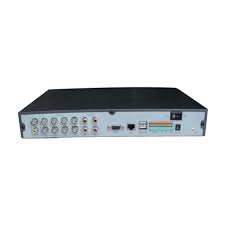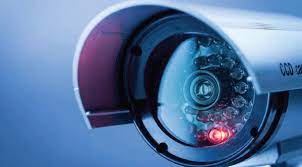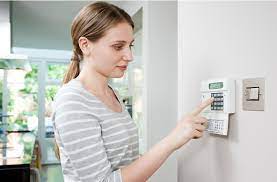DVR CCTV: Enhancing Security and Surveillance Systems
In today’s fast-paced world, security has become a top priority for individuals and businesses alike. With an increasing need to protect our homes, offices, and public spaces, the demand for advanced surveillance systems has grown exponentially. One such technology that has revolutionized the field of security is DVR CCTV.
DVR (Digital Video Recorder) CCTV systems provide an efficient and reliable solution for capturing, recording, and monitoring video footage. Unlike traditional analog systems, DVR CCTV offers enhanced features and capabilities that significantly improve the effectiveness of surveillance.
One of the key advantages of DVR CCTV is its ability to record high-quality digital video footage. This ensures clear and detailed images that are essential when it comes to identifying individuals or incidents. Whether it’s monitoring a store for shoplifting or securing a residential property from potential break-ins, DVR CCTV provides valuable evidence in case of any untoward incidents.
Moreover, DVR CCTV systems offer various recording options to suit specific needs. Users can choose from continuous recording, scheduled recording, or motion-based recording. Motion-based recording is particularly useful as it only captures footage when movement is detected within the camera’s field of view. This not only saves storage space but also makes it easier to search for relevant events during playback.
Another significant advantage of DVR CCTV is its remote access capability. With the help of internet connectivity, users can access live video feeds and recorded footage from anywhere at any time using their smartphones or computers. This feature proves invaluable for homeowners who want to keep an eye on their property while away or business owners who need to monitor multiple locations simultaneously.
DVR CCTV systems also offer advanced search functionalities that simplify the process of finding specific events within recorded footage. Users can search by date, time, camera location, or even by specific motion detection triggers. This saves time and effort when reviewing hours or days’ worth of recordings.
Furthermore, DVR CCTV systems can be integrated with other security technologies to create a comprehensive surveillance network. This includes integrating with access control systems, alarm systems, and even facial recognition technology. Such integration enhances overall security measures and provides a more robust solution.
In terms of scalability, DVR CCTV systems are highly flexible. Users can easily add or remove cameras as per their changing security requirements. This makes DVR CCTV an ideal choice for both small-scale installations, such as homes and retail stores, as well as large-scale deployments in commercial complexes or public spaces.
Lastly, DVR CCTV systems are cost-effective in the long run. With the ability to store large amounts of digital footage on hard drives, there is no need for physical storage space or tapes like in traditional analog systems. Additionally, the ease of maintenance and troubleshooting reduces operational costs.
In conclusion, DVR CCTV has revolutionized the way we approach security and surveillance. Its advanced features, remote access capabilities, scalability, and cost-effectiveness make it an indispensable tool for ensuring safety and peace of mind. Whether it’s protecting our homes or securing our businesses, DVR CCTV provides a reliable solution that enhances overall security measures in today’s ever-changing world.
6 Essential Tips for DVR CCTV: Ensuring Effective Surveillance and Security
- Monitor the CCTV footage regularly to make sure all systems are working properly.
- Make sure you have enough storage space for your recordings.
- Backup your recordings on an external drive in case of system failure or theft.
- Ensure that the DVR is placed in a secure location and is not visible to potential intruders or thieves.
- Set up motion detection alerts so you can be alerted when movement is detected by the cameras, even if you’re away from home or office premises.
- Use a high-quality recording system with clear images and sound quality for optimal surveillance results
Monitor the CCTV footage regularly to make sure all systems are working properly.
Monitoring CCTV Footage: Ensuring Optimal Performance of DVR CCTV Systems
When it comes to maintaining the security and surveillance of your premises, having a DVR CCTV system in place is a smart choice. However, it’s not enough to just install the system and forget about it. Regularly monitoring the CCTV footage is crucial to ensure that all systems are working properly.
By monitoring the CCTV footage on a regular basis, you can identify any potential issues or malfunctions early on. This proactive approach allows you to take prompt action and prevent any security vulnerabilities. Here are a few reasons why monitoring is essential:
- Detecting Technical Issues: Regularly reviewing the CCTV footage enables you to spot any technical issues that may arise. This includes problems such as camera malfunctions, distorted images, or loss of video feed. By identifying these issues promptly, you can arrange for necessary repairs or replacements, ensuring uninterrupted surveillance coverage.
- Verifying Camera Angles and Coverage: Monitoring the footage helps you verify if the cameras are positioned correctly and covering all desired areas. Over time, environmental factors or accidental movements may cause cameras to shift or lose focus. By regularly checking the footage, you can ensure that your cameras are capturing clear images and covering critical areas.
- Assessing Image Quality: The quality of the recorded video is crucial for effective surveillance. By monitoring the CCTV footage, you can assess if there are any issues with image clarity, resolution, or color accuracy. Adjustments can then be made to optimize image quality and ensure that important details are captured clearly.
- Identifying Security Breaches: Regularly reviewing the CCTV footage allows you to quickly identify any suspicious activities or security breaches on your premises. By promptly detecting such incidents, appropriate actions can be taken to address them before they escalate into more significant problems.
- Compliance with Legal Requirements: Depending on your location and industry, there may be legal requirements regarding surveillance systems and data retention. Monitoring the CCTV footage regularly ensures that you are compliant with these regulations, avoiding any potential legal consequences.
To effectively monitor your CCTV footage, establish a schedule or routine for reviewing the recordings. This could be daily, weekly, or as per your specific needs. Consider involving multiple personnel to share the responsibility and ensure comprehensive coverage.
In addition to regular monitoring, it’s essential to have a robust maintenance plan in place for your DVR CCTV system. This includes regular system checks, firmware updates, and cleaning of camera lenses to maintain optimal performance.
Remember, a proactive approach to monitoring your CCTV footage enhances the overall effectiveness of your security measures. By promptly addressing any issues and ensuring that all systems are working properly, you can maintain a high level of security and peace of mind.
Make sure you have enough storage space for your recordings.
Make Sure You Have Enough Storage Space for Your DVR CCTV Recordings
When it comes to setting up a DVR CCTV system, one important aspect that often gets overlooked is ensuring you have enough storage space for your recordings. Having sufficient storage is crucial to ensure that your surveillance system functions effectively and that you can store an adequate amount of video footage.
The amount of storage space needed depends on various factors such as the number of cameras, the recording quality, and the duration for which you want to retain the footage. It’s essential to estimate your storage requirements accurately to avoid running out of space or compromising the quality of your recordings.
To determine how much storage space you need, consider factors like the resolution and frame rate at which you want to record. Higher resolutions and frame rates result in larger file sizes but offer better image quality. If you require clear and detailed footage, you may need more storage capacity.
Next, think about how long you want to retain your recordings. Some businesses or organizations may have legal requirements or specific operational needs that dictate how long they need to keep video footage. Longer retention periods will naturally require more storage space.
Additionally, consider whether your DVR CCTV system supports features like motion-based recording or scheduled recording. Motion-based recording only captures footage when there is activity within the camera’s field of view, conserving storage space by eliminating unnecessary recordings during idle periods. Scheduled recording allows you to specify certain time frames for continuous recording, which can help optimize storage usage.
Once you have determined your requirements, ensure that your DVR CCTV system has sufficient internal or external storage capacity. Most systems offer options for expanding storage through hard drives or network-attached storage (NAS) devices. It’s advisable to choose reliable and high-capacity drives specifically designed for surveillance applications.
Regularly monitor your available storage space and make adjustments as needed. If you find yourself running low on storage, consider implementing retention policies where older footage is automatically deleted or overwritten to make room for new recordings.
Having enough storage space for your DVR CCTV recordings is essential for maintaining the integrity and effectiveness of your surveillance system. It ensures that you can capture and retain the necessary footage for security purposes, investigations, or compliance requirements. By carefully estimating your storage needs and implementing appropriate measures, you can ensure that your DVR CCTV system operates smoothly and provides reliable video storage capabilities.
Backup your recordings on an external drive in case of system failure or theft.
DVR CCTV Tip: Safeguard Your Recordings with External Drive Backup
When it comes to the security of your property or premises, having a reliable surveillance system in place is crucial. DVR CCTV systems offer exceptional features to capture and monitor video footage, but it’s equally important to have a backup plan in case of system failure or theft. One valuable tip to ensure the safety of your recordings is to regularly backup your footage on an external drive.
System failures can happen unexpectedly, and without a backup, you risk losing all the recorded footage that could be vital for investigations or legal purposes. By backing up your recordings on an external drive, you create an additional layer of protection for your valuable data.
In the unfortunate event of a system failure, having a backup on an external drive allows you to quickly restore your surveillance system without losing any critical footage. This ensures that you can resume monitoring and reviewing recorded events promptly.
Furthermore, in the unfortunate event of theft or vandalism where the DVR CCTV system itself is stolen or damaged, having an external drive backup becomes even more crucial. By keeping your backups off-site or in a secure location, you safeguard your recordings from being lost along with the stolen equipment. This can prove invaluable when working with law enforcement agencies to identify culprits or for insurance claims.
To implement this tip effectively, it is essential to establish a regular backup routine. Set a schedule that suits your needs—whether it’s daily, weekly, or monthly—and ensure that all recorded footage is transferred onto the external drive promptly. Automating this process through scheduled backups can help streamline the task and reduce the chances of forgetting to back up important footage.
When selecting an external drive for backup purposes, consider factors such as storage capacity and durability. Choose a drive with ample space to accommodate all your recordings without running out of storage frequently. Additionally, opt for drives that are designed for continuous use and are resistant to physical damage or data corruption.
Remember to keep the external drive in a secure location, away from potential hazards like extreme temperatures or moisture. Consider using a lockable cabinet or safe to protect the backup drive from unauthorized access.
By following this simple yet crucial tip of backing up your recordings on an external drive, you ensure the safety and accessibility of your surveillance footage. It provides peace of mind, knowing that even in the face of system failure or theft, your valuable data remains intact and can be readily restored. Protect your investments and enhance the effectiveness of your DVR CCTV system by implementing regular backup practices today.
Ensure that the DVR is placed in a secure location and is not visible to potential intruders or thieves.
When it comes to setting up a DVR CCTV system, one crucial tip that should not be overlooked is ensuring the placement of the DVR in a secure location. The security and effectiveness of the entire surveillance system depend on it.
The DVR, which stores all the recorded video footage, contains valuable information that can be vital in identifying and apprehending potential intruders or thieves. Therefore, it is essential to keep it out of sight from unauthorized individuals.
Ideally, the DVR should be placed in a locked cabinet or a secure room that is accessible only to authorized personnel. This ensures that only those with proper clearance can access and manipulate the system’s settings or retrieve recorded footage.
By keeping the DVR hidden from view, you eliminate the risk of potential intruders tampering with or disabling the device. If an intruder were to notice the presence of a visible DVR, they might attempt to steal or damage it in an effort to hinder any investigation or evidence gathering.
Additionally, placing the DVR in a secure location minimizes the risk of theft. Potential thieves are less likely to target your premises if they are unaware of its existence or unable to locate its whereabouts.
Remember to consider environmental factors when choosing a secure location for your DVR as well. Ensure that it is protected from dust, moisture, extreme temperatures, and other elements that could potentially damage its components and compromise its functionality.
In conclusion, placing your DVR in a secure location away from prying eyes is an essential step in ensuring the effectiveness and integrity of your CCTV surveillance system. By doing so, you protect valuable recorded footage and deter potential intruders from attempting to tamper with or steal your equipment. Take this simple yet crucial precautionary measure to enhance the overall security of your premises.
Set up motion detection alerts so you can be alerted when movement is detected by the cameras, even if you’re away from home or office premises.
Stay Alert with DVR CCTV: Motion Detection Alerts for Enhanced Security
When it comes to ensuring the safety of your home or office premises, staying informed about any suspicious activity is crucial. With DVR CCTV systems, you can take advantage of a valuable feature called motion detection alerts to enhance your security measures.
Setting up motion detection alerts allows you to receive notifications whenever movement is detected by the cameras, even if you’re not physically present at the location. This feature proves particularly useful when you’re away from home or office and want to stay updated on any potential intrusions or unexpected events.
To activate motion detection alerts on your DVR CCTV system, follow these simple steps:
Access the settings: Log in to your DVR’s user interface using a computer or smartphone. Navigate to the settings section where you can configure various parameters related to motion detection.
Enable motion detection: Locate the motion detection option and enable it for the cameras you want to monitor. You may have the option to adjust sensitivity levels based on your specific requirements.
Configure alert settings: Set up how you would like to receive alerts when motion is detected. Most DVRs offer multiple notification options, such as email notifications, push notifications on mobile devices, or even SMS alerts.
Define monitoring zones: Depending on your system’s capabilities, you can define specific areas within the camera’s field of view where you want motion detection enabled. This helps reduce false alarms triggered by irrelevant movement outside those zones.
Test and fine-tune: After configuring the settings, perform a test run by moving within the monitored areas and ensure that alerts are triggered correctly. Adjust sensitivity levels if needed until you achieve optimal results.
By setting up motion detection alerts on your DVR CCTV system, you gain several advantages in terms of security:
Immediate awareness: You’ll receive real-time notifications whenever there is movement detected within the monitored zones, allowing you to take appropriate action promptly.
Remote monitoring: Even if you’re away from home or office, you can stay connected and informed about any potential security breaches. This gives you peace of mind and the ability to respond swiftly, whether it’s contacting authorities or remotely accessing your surveillance system for a closer look.
Minimized false alarms: By defining specific monitoring zones, you can reduce false alarms triggered by irrelevant movement outside those areas. This ensures that alerts are only generated when there is significant activity within the designated zones.
Efficient resource utilization: Motion detection alerts help optimize storage space on your DVR by recording and saving footage only when motion is detected. This saves both time and storage capacity, making it easier to review relevant events during playback.
Setting up motion detection alerts on your DVR CCTV system is a proactive step towards enhancing your security measures. It empowers you with real-time awareness and remote monitoring capabilities, ensuring that you can effectively protect your home or office premises even when you’re physically absent. Stay alert and stay secure with motion detection alerts on your DVR CCTV system.
Use a high-quality recording system with clear images and sound quality for optimal surveillance results
When it comes to setting up a surveillance system, one of the most crucial factors to consider is the quality of the recording system. A high-quality DVR CCTV system with clear images and sound quality can make a world of difference in obtaining optimal surveillance results.
Having clear images is essential for capturing accurate details and identifying individuals or incidents. A high-resolution camera paired with a DVR that supports high-definition recording ensures that every minute detail is captured with precision. This becomes particularly important when reviewing footage for investigative purposes or providing evidence in legal proceedings.
In addition to clear images, sound quality also plays a significant role in surveillance systems. Having audio recordings alongside video footage can provide valuable context and additional evidence in certain situations. For example, clear audio can help capture conversations or identify specific sounds that may be crucial in understanding an event or incident.
Investing in a high-quality recording system not only enhances the effectiveness of surveillance but also improves overall security measures. It allows for better monitoring and analysis of recorded footage, making it easier to identify potential threats or suspicious activities.
Moreover, a high-quality recording system ensures that the recorded footage remains intact and usable over time. Inferior quality systems may result in pixelated or distorted images, making it difficult to extract useful information from the recordings.
When choosing a DVR CCTV system, look for reputable brands known for their reliable recording capabilities. Consider features such as resolution, frame rate, compression technology, and storage capacity to ensure optimal performance.
Remember that while cameras play a crucial role in capturing images, it is equally important to have a reliable DVR that can effectively process and store the recorded data. Ensure that the DVR supports the desired resolution and has sufficient storage capacity to accommodate your surveillance needs.
By using a high-quality recording system with clear images and sound quality, you can maximize the effectiveness of your surveillance efforts. It provides peace of mind knowing that you have reliable evidence at your disposal if needed while ensuring that every detail is captured accurately.




